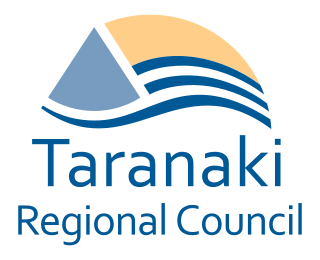
Taranaki is a region in the west of New Zealand's North Island. It is named after its main geographical feature, the stratovolcano Mount Taranaki, also known as Mount Egmont.

Josiah Clifton Firth was a New Zealand farmer, businessman and politician who had a brief brush with fame as the messenger between Te Kooti and the New Zealand Government during Te Kooti's War.

Mount Eden is a suburb in Auckland, New Zealand whose name honours George Eden, 1st Earl of Auckland. It is 4 kilometres (2.5 mi) south of the Central Business District (CBD). Mt Eden Road winds its way around the side of Mount Eden Domain and continues to weave back and forth as it descends into the valley; it runs south from Eden Terrace to Three Kings. Mt Eden village centre is located roughly between Valley Road and Grange Road. The domain is accessible on foot from many of the surrounding streets, and by vehicle from Mt Eden Road. The central focus of the suburb is Maungawhau / Mount Eden, a dormant volcano whose summit is the highest natural point on the Auckland isthmus.

The North American Aviation NA-16 was the first trainer aircraft built by North American Aviation, and was the beginning of a line of closely related North American trainer aircraft that would eventually number more than 17,000 examples, notably the T-6 Texan family.

Mount Eden Prisons consists of two separate facilities in the Auckland, New Zealand suburb of Mount Eden — the Mount Eden Prison and the Mount Eden Corrections Facility.

Newton is a small suburb of Auckland, New Zealand, under the local governance of the Auckland Council. It had a population of 1,641 in the 2013 census.

H. M. Factory, Gretna was Britain's largest cordite factory in World War I. The government-owned facility was adjacent to the Solway Firth, near Gretna, Dumfries and Galloway. It was built by the Ministry of Munitions in response to the Shell Crisis of 1915. The capital cost was £9,184,000 and it covered 9,000 acres (3,600 ha). The cost of working it from September 1916 to September 1918 was £12,769,000, during which time it produced cordite valued at £15,000,000, though it was claimed that without it the cordite would have had to be imported from the USA at a cost of £23,600,000.

Symonds Street is a street in Auckland, New Zealand's most populous city. The road runs southwest and uphill from the top of Anzac Avenue, through the City Campus of University of Auckland, over the Northwestern Motorway and Auckland Southern Motorway and to the start of New North Road and Mount Eden Road.
Alfred William Gallagher was a New Zealand inventor, manufacturing engineer and businessman. He is notable for popularising the electric fence.

The Imperial Gift was the donation of aircraft from surplus stocks in Britain after World War I to the dominions of the British Empire: Canada, Australia, New Zealand, South Africa and India. On 29 May 1919, the Cabinet of the United Kingdom agreed to give 100 aircraft to the dominions in addition to replacements for aircraft donated to Britain during the war. These aircraft formed the core of newly established air forces in several dominions.

Maungawhau / Mount Eden is a scoria cone and Tūpuna Maunga in the Mount Eden suburb of Auckland, New Zealand. The cone is part of the Auckland volcanic field, the tallest located on the isthmus.

Greenwoods Corner is an Auckland neighbourhood located within the suburb of Epsom, situated to the south of Newmarket and to the north of Royal Oak, at the intersection of Pah Road and Manukau Road. It is settled in the lee of Maungakiekie / One Tree Hill and serves as a convenient launching point for the area's many attractions. Cornwall Park with Maungakiekie and the Stardome Observatory, Alexandra Park with its harness-racing track, and Monte Cecilia Park with the Pah Homestead and TSB Bank Wallace Arts Centre are all a convenient distance from Greenwoods Corner.

The Small Arms Ammunition Factories (SAAF) were ammunition manufacturing plants run by the Australian government. Nearly all of their production was for domestic use by their military, the police forces, and government-appointed agents.
This is a timeline of the history of the city of Auckland in New Zealand.

Waikumete Cemetery, originally Waikomiti Cemetery, is New Zealand's largest cemetery. It occupies a site of 108 hectares in Glen Eden, Auckland, and also contains a crematorium in the south-west corner of the cemetery.

The Defence Armament Depot, named the Kauri Point Armament Depot until 2010, is a New Zealand Defence Force munitions storage facility in the Auckland suburb of Chatswood which was originally built for the Royal New Zealand Navy. The Depot has access to Waitematā Harbour. The armament depot was established in 1935, and was considerably expanded during the Second World War. A program to modernise the facility was announced in 2011.

Defence Explosive Factory Maribyrnong is a heritage-listed military installation and former munitions factory at Cordite Avenue, Maribyrnong, Victoria, Australia. It was added to the Australian Commonwealth Heritage List on 22 June 2004.

John Whitney was a New Zealand industrialist, who established the Colonial Ammunition Company. Born in England, he served as an officer in the British Army for several years, mainly in Ireland. In 1884 he and his family emigrated to New Zealand. The Panjdeh incident of 1885 saw him join the colonial militia. The crisis also saw Britain temporarily cease its supply of ammunition to New Zealand. To fill the resulting void, Whitney started up a company to manufacture ammunition, and by 1888, this had evolved into the Colonial Ammunition Company. Factories were built in Mount Eden in Auckland and in Melbourne, Australia, and these supplied ammunition for New Zealand and Australian governments. The company was a major supplier of munitions during the First World War. After Whitney's retirement, the business was run by his son. Whitney died at the age of 96 at Remuera, in Auckland.




















